Iconography of the Bible
A considerable attention in printed books of the Holy Scripture was accorded to illustrations. It should be noted that these editions were by no means the same as earlier, medieval, “Paupers’ Bibles”, in which the story was told through images. However, the printed Bibles also featured numerous pictures. Some of the engravings were intended for decorating the text, others, for providing the reader with additional information. The story of the Salvation is often depicted on the title pages and frontispieces of the Bibles. Contextual knowledge was to be provided by captioned maps of the Holy Land or Jerusalem, plans of the Temple of Jerusalem or the Noah’s Arc with legends describing where what would have been placed. Printed editions of the New Testament are often adorned with the portraits of the Four Evangelists placed at the beginning of each Gospel. All these illustrations are easily recognizable even for an individual unfamiliar with biblical stories. Various versions of them occur in art from the Middle Ages to these days.
Title Page as a Summary of Biblical Teaching
The engraving on the title page of this Bible, translated by Martin Luther into German, tells a story of the Fall and Salvation based on the Reformation’s seminal painting by Lukas Cranach the Elder.
A lavishly decorated page in the beginning of the Bible sets forth the message of Salvation characteristic for the Reformation.
In the middle part of the title page of this Bible, Jesus Christ and Moses are depicted to the left and to the right from the title. The Latin inscriptions above these figures explain that through them people were given Grace, Truth and Laws. The scene at the top of the title page concisely tells the story of the Fall and Salvation. A man depicted in the center of this composition is being encouraged to choose Salvation brought to him by Christ. The bottom part of the page features three scenes from the New Testament: the Nativity and the Baptism of Jesus, and the Last Supper.
The publishers of the Brest Bible continued the Evangelical Reformed Bible-printing tradition in their choice of illustrations, taking on the same iconographic narratives.
The title page of this bilingual Bible is adorned by the coats of arms of the rulers who had funded its publication. In this way, not only the benefactors were thanked for their support, but also the readers were reminded about the princes’ good deeds for the faith.
Horned Moses
The best-known iconographic motive related to St. Jerome is the depiction of a horned Moses found not only in book engravings, but also in painting and sculpture. The credit for this imagery should be given to what likely is the most famous translation error ever. Translating Chapter 34 of the Book of Exodus, St. Jerome read the word קָרַ֛ן (karan), meaning “radiant”, as קָ֫רֶן (keren), translated as “horns”. The oldest known image of a horned Moses exists in a manuscript created in England about 1050. This depiction was widespread until the 16th century, and then began decreasing in popularity, the horns starting to resemble two sheaves of beams.
Moses bringing a plague of locusts on the Egyptians.
God giving Moses the stone tablets with the Ten Commandments.
The Jews gathering manna in the desert.
Moses and Aaron at the Pharaoh’s. The horns atop Moses’ head easily allow to recognize the most important personages depicted in the illustration.
This little drawing features as many as three scenes. The most important of them shows Moses and Aaron at the Pharaoh’s. This scene not only stands out, but also contain the names of the personages inscribed above them. On the right, the bottom scene shows the oppressed Jewish people, and the top one shows God revealing himself to Moses and speaking to him.
This illustration from the Book of Exodus of the Old Testament features Moses closing the waters of the Red Sea and the Pharaoh’s hosts drowning in them. Moses is easily recognized by his horns among other personages who closely resemble residents of 16th-century Cracow.
Moses parts the sea waters so that the Jews could safely cross to the other shore. Later, the returning waters will flood the Pharaoh’ hosts in their pursuit of the Jews.
Illustrations of the Old Testament
King David playing a harp opens the Psalms. The initial B featuring the King not only marks the beginning of the first psalm (“Beatus vir”), but draws the reader’s attention to this place, telling that it is more important than first lines of the other texts, whose initials stand out only by their size and color.
Sometimes, the readers of the Holy Scripture would correct seemingly “vulgar” scenes, blotting out that which could bring on inappropriate thoughts. This is precisely what happened to this illustration depicting Adam and Eve in Paradise.
One of the Books of the Holy Scripture, the Psalms, begins with the image of King David playing music. David holds in his hands a harp, and a portative organ can be seen on the table nearby. Hymns to the glory of God were sung to the accompaniment of these instruments, so 16th-century readers would have been able to recognize them.
One of the images often repeated in illustrated Bibles depicts the High Priest Aaron. In some books this illustration only serves to decorate the text, in others, it provides additional information, for example, about the priest’s clothing.
God looking from the Heaven at the world He created.
A plan of Jerusalem that had to help the readers imagine the events recounted in the Holy Scripture.
The title page of the Pentateuch of the Old Testament.
A drawing and plans of the Noah’ Ark.
The beginning of the Old Testament in this Czech Bible is particularly lavishly decorated. The left page features the Creation of the World. The right, in the center, shows Moses and the High Priest Aaron. The top of this page depicts the Expulsion from Paradise, and the bottom, Adam and Eve, already working hard on earth.
Jacob’s dream. In this dream, Jacob saw a ladder stretching up to Heaven, with angels climbing up and down upon it, and he also saw God talking to him.
Fleeing from Egypt into the desert, the Jews began to speak against God and Moses, complaining about the food they received. In punishment, they were attacked by fiery serpents, from whose bites people died. Aware of their guilt, the Jews repented. Then God commanded Moses to forge a copper serpent. Everyone bitten who looked at it, was healed.
Samson fighting a lion.
Illustrations of the New Testament
A translation of the New Testament into Latin by Erasmus of Rotterdam (1469–1536) with his commentaries and the Greek text of the original.
As late as in the 16th century, printers upheld the traditions of manuscript book design. The first page of each book of the New Testament was copiously decorated by engravings and ornamental letters. Sumptuous medieval manuscripts had been decorated in a similar fashion.
This Book of Gospels is decorated by the portrait images of the Four Evangelists at the beginning of each Gospel.
The title page of the New Testament depicting the Four Evangelists and important scenes recounted in the Gospels.
The title page of the Epistles of the Apostles from the New Testament. Quotations from the Epistles are given below each miniature to help the reader understand what is depicted.
An illustration depicting the genealogical tree of Jesus Christ as traced by Matthew the Evangelist.
The Four Horsemen of the Apocalypse (The Book of Revelation). The first, with a bow, symbolizes Conquest. The second, with a sword, brings War. The third, with scales, invokes Famine, and the fourth is Death.

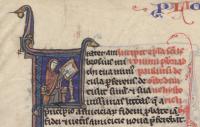
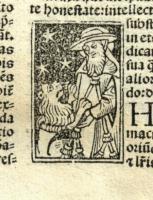
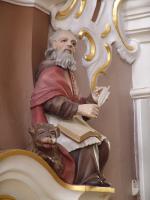
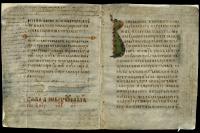
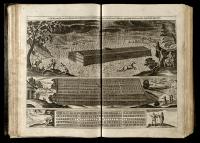
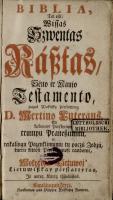
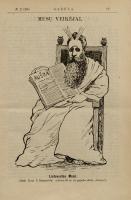
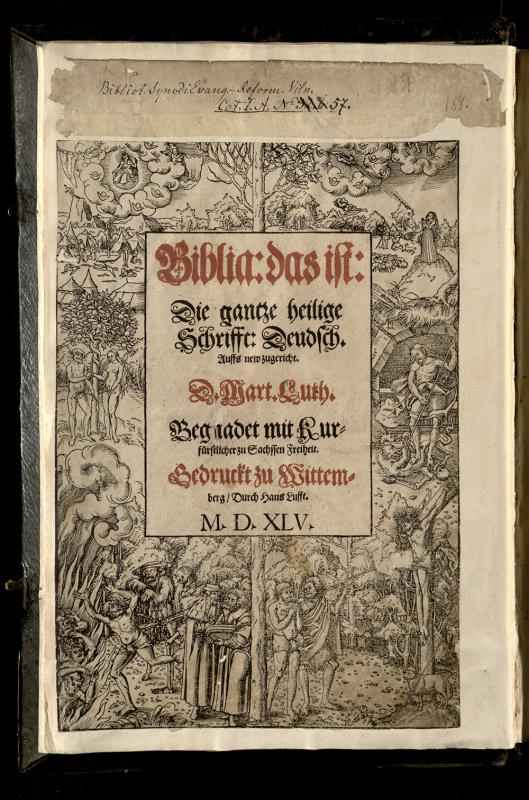
![Bibli czeski. [Praha: G. Melantrych], 1557. Bibli czeski. [Praha: G. Melantrych], 1557.](http://web6.mab.lt/files/large/97bb38fe6270bddc3a33ec645c98c5aeb2fb8af6.jpg)
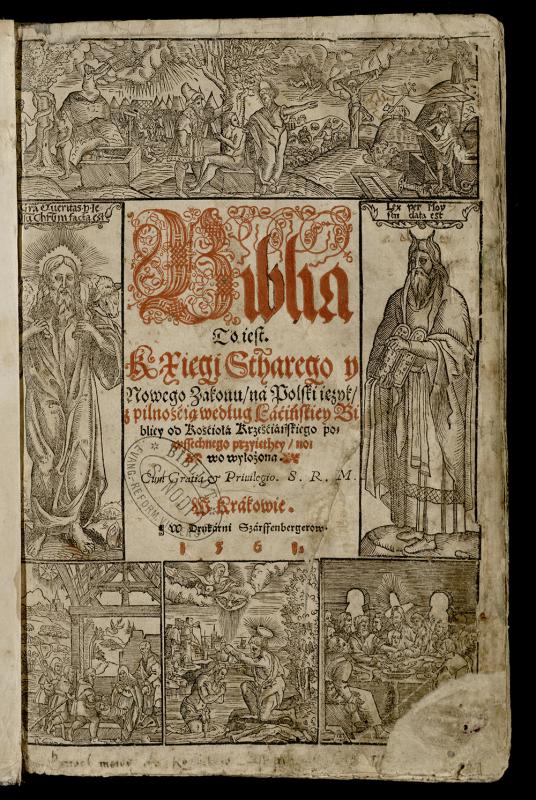
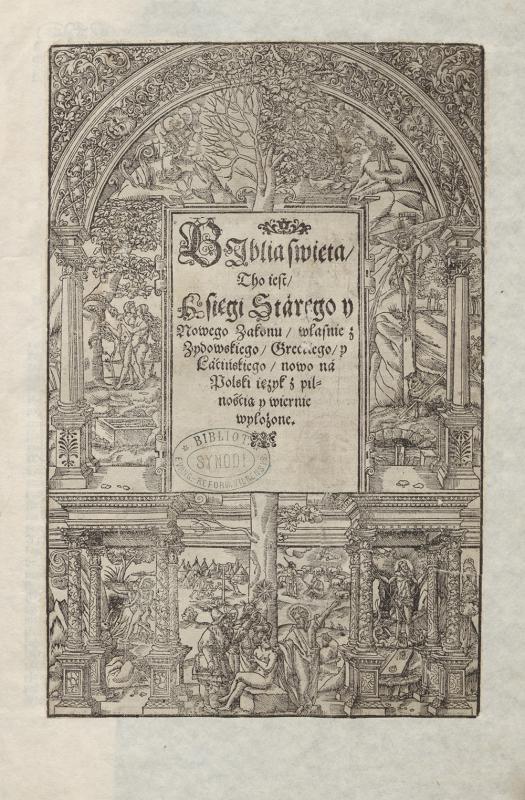
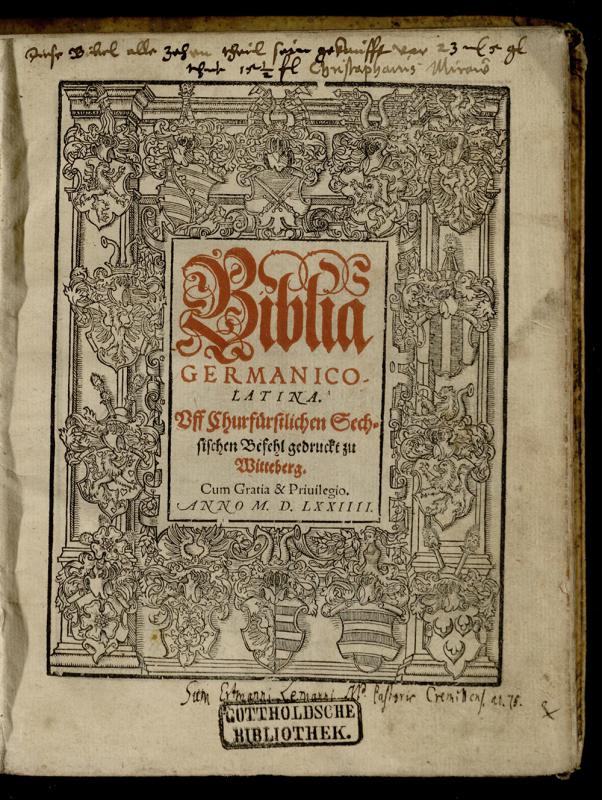
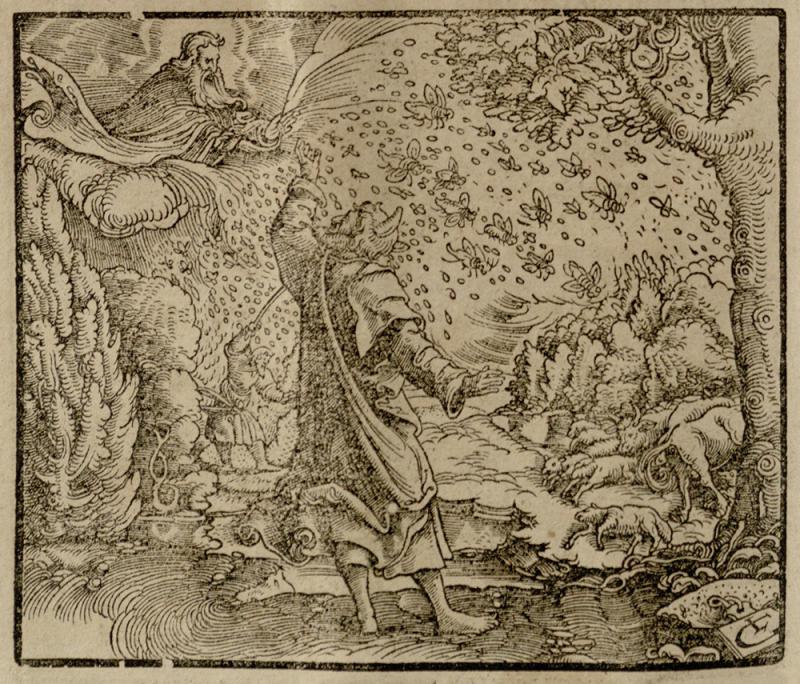
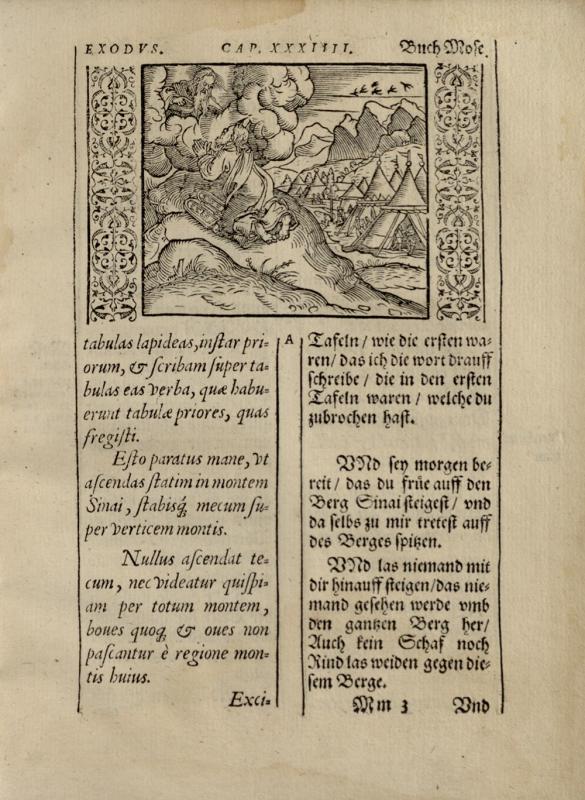
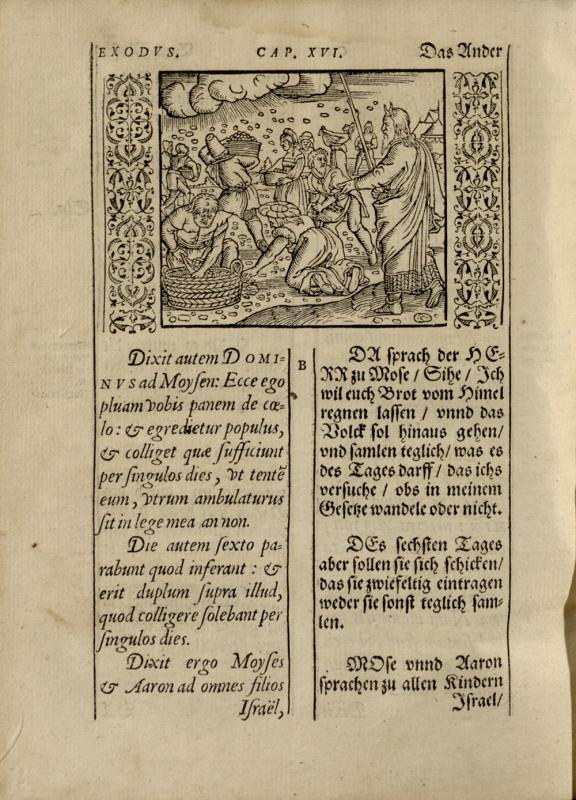
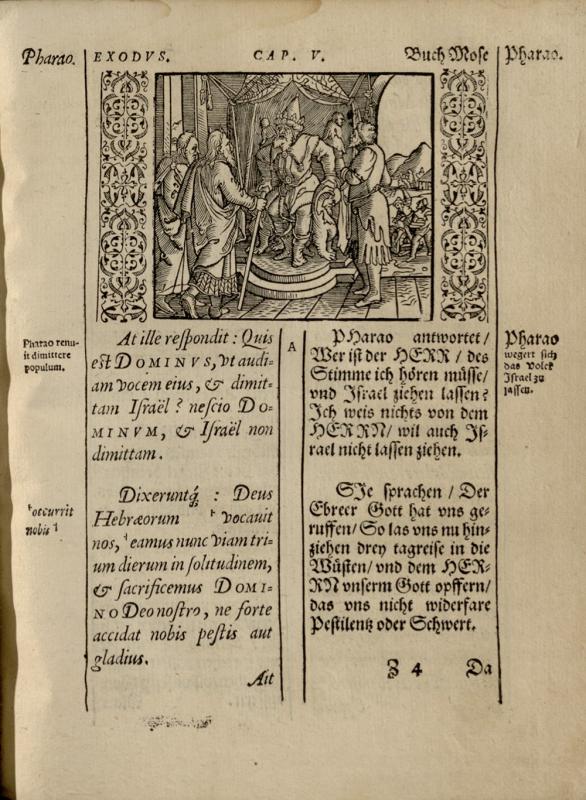
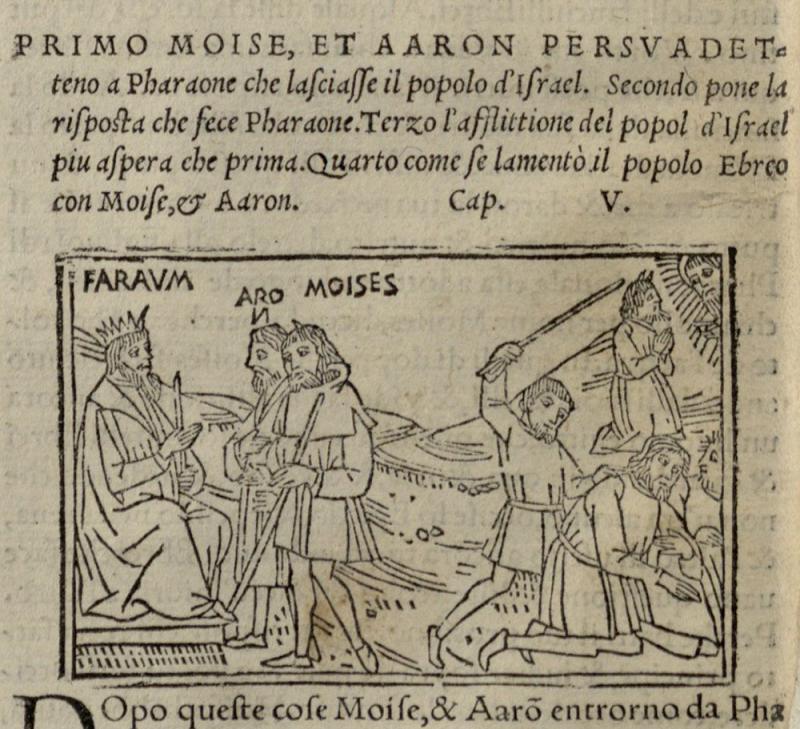
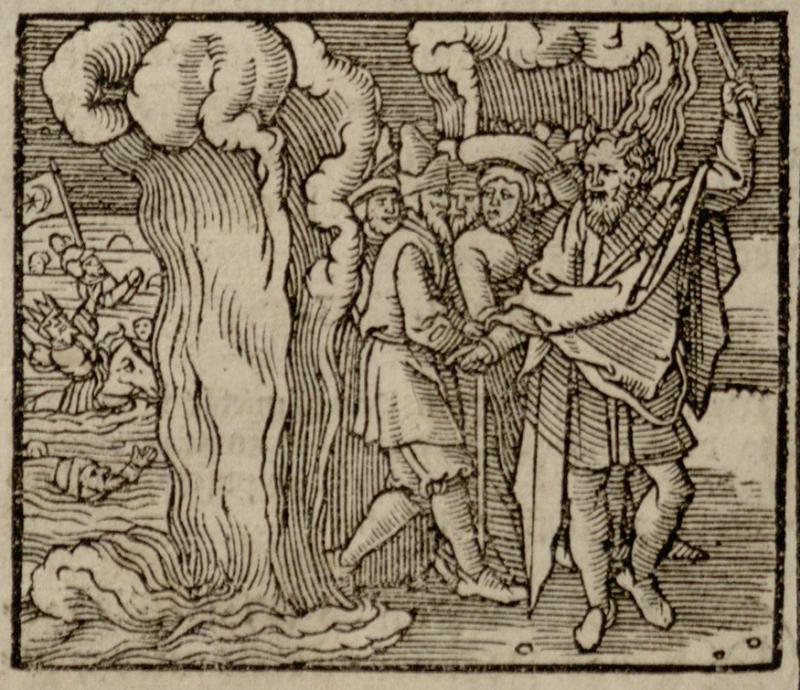
![Bibli czeski. [Praha: G. Melantrych], 1557. Bibli czeski. [Praha: G. Melantrych], 1557.](http://web6.mab.lt/files/large/86206f99d9bbe798dfb7261212c86c747602735c.jpg)
![Sanctus Hieronimus Biblia [Paryžiaus Biblija]. Prancūzija, XIII a. Pergamentas. Lotynų k. Sanctus Hieronimus Biblia [Paryžiaus Biblija]. Prancūzija, XIII a. Pergamentas. Lotynų k.](http://web6.mab.lt/files/large/a0410e32fcc542da97a49c806cba782cca2b8b17.jpg)
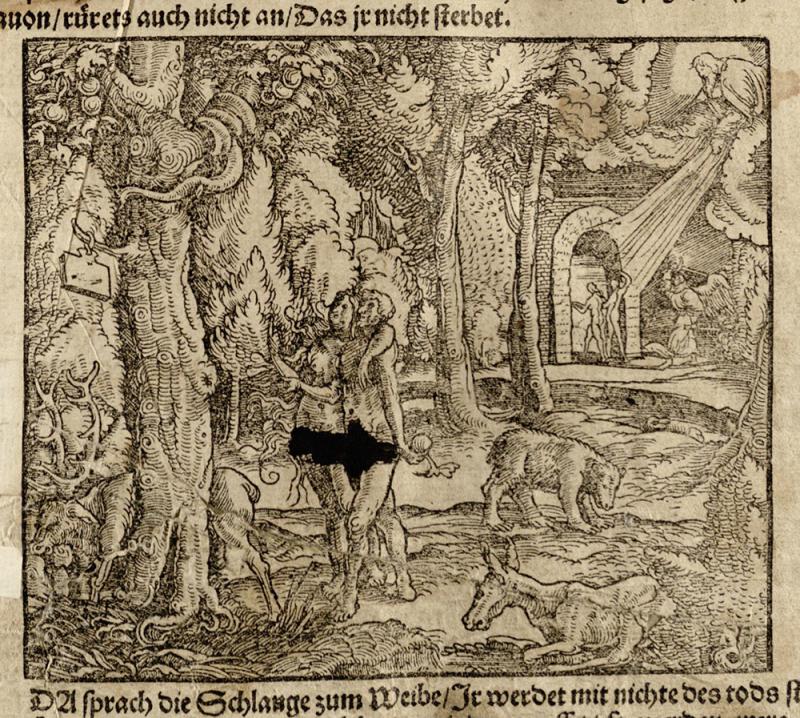
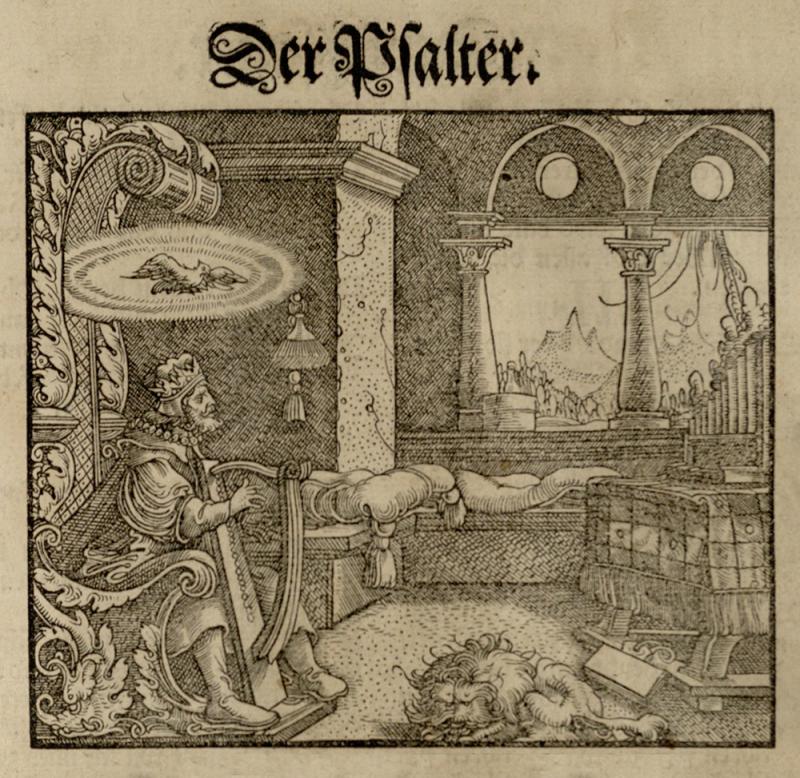
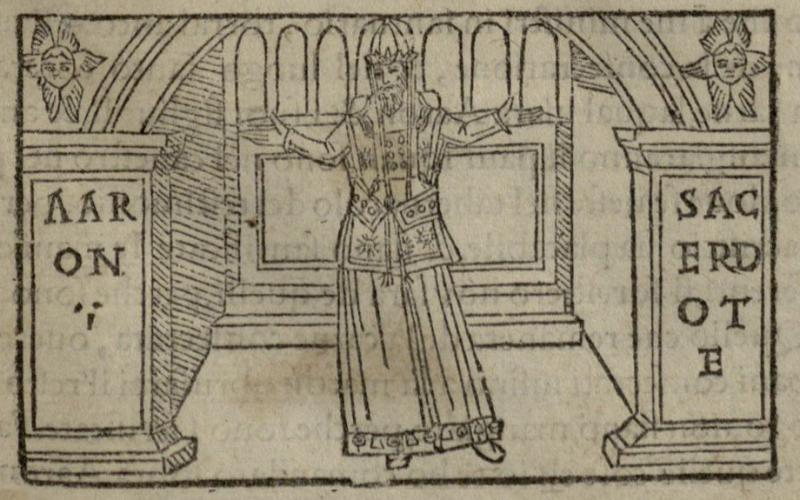
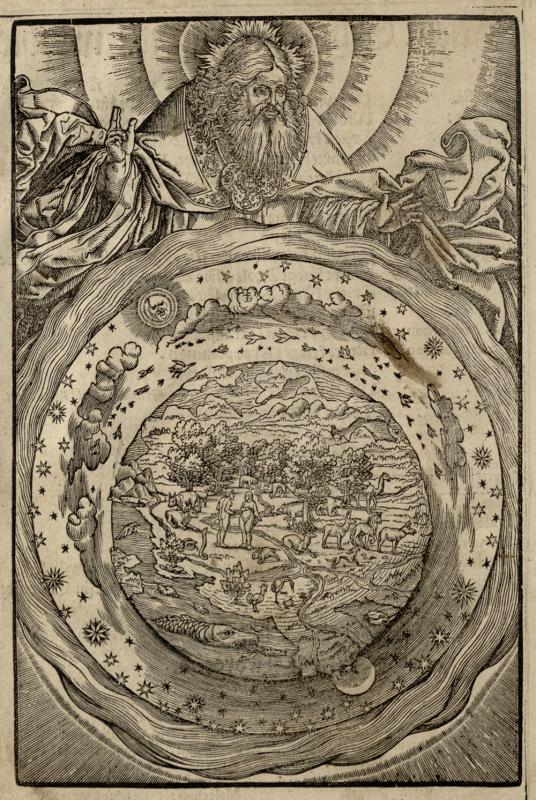
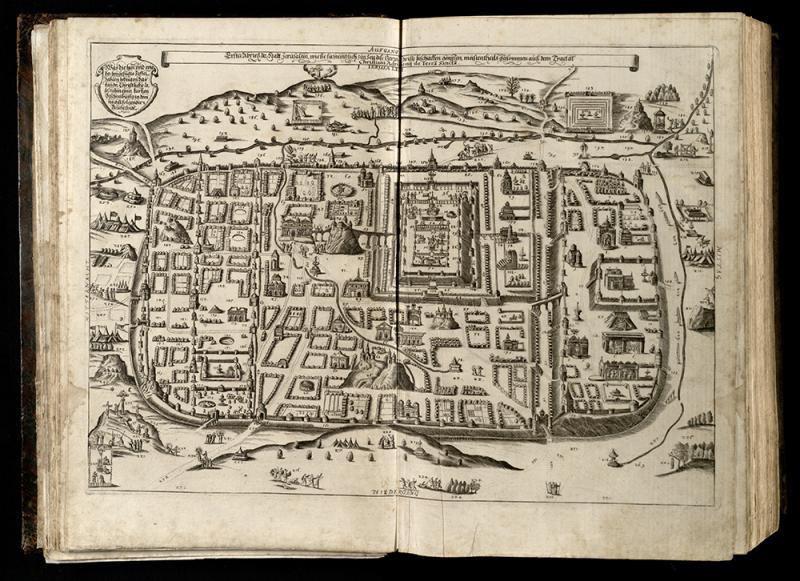
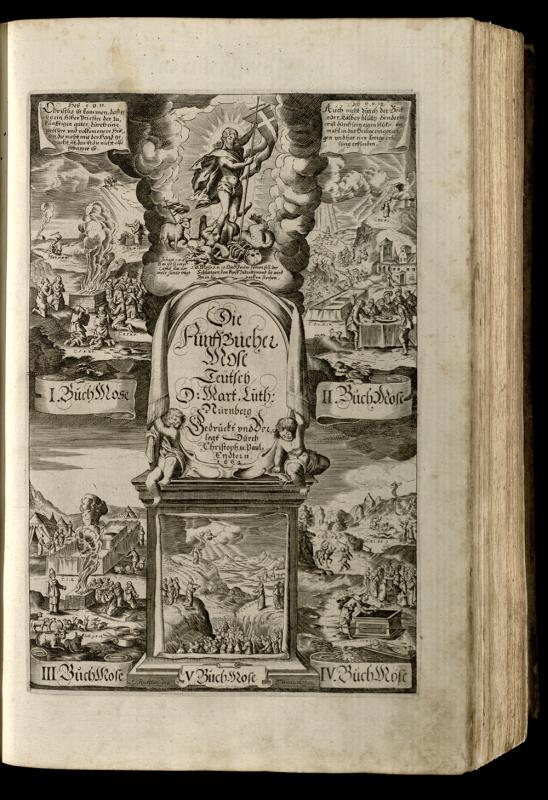

![Bibli czeski. [Praha: G. Melantrych], 1557. Bibli czeski. [Praha: G. Melantrych], 1557.](http://web6.mab.lt/files/large/f8385883cf19f4cc2f659c4ff73155b76ab406fd.jpg)
![Bibli czeski. [Praha: G. Melantrych], 1557. Bibli czeski. [Praha: G. Melantrych], 1557.](http://web6.mab.lt/files/large/3eb9a07c38bed2007862f5d992097f23ceff7d5b.jpg)
![Bibli czeski. [Praha: G. Melantrych], 1557. Bibli czeski. [Praha: G. Melantrych], 1557.](http://web6.mab.lt/files/large/ac2bb038f12e6acbd6ee8a3d0a5aaecae9bde3d6.jpg)
![Bibli czeski. [Praha: G. Melantrych], 1557. Bibli czeski. [Praha: G. Melantrych], 1557.](http://web6.mab.lt/files/large/efacc93feeb03165620f17bf4b87422582769327.jpg)
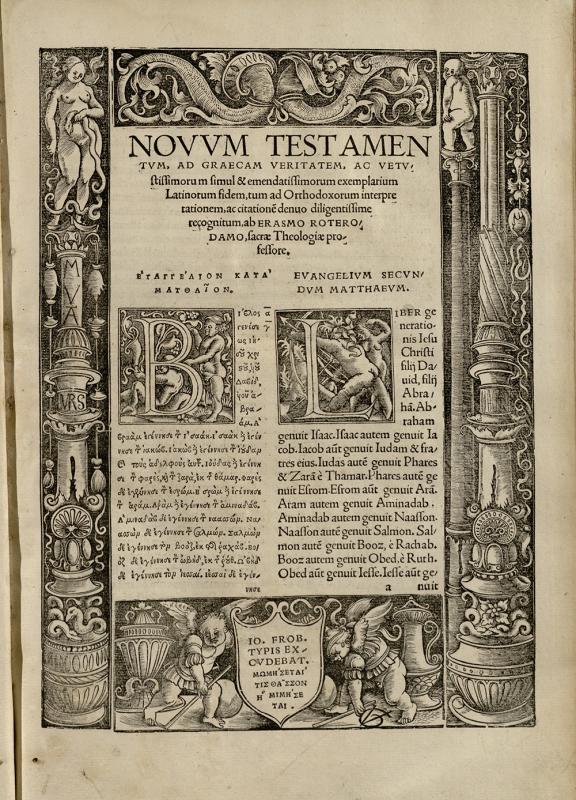
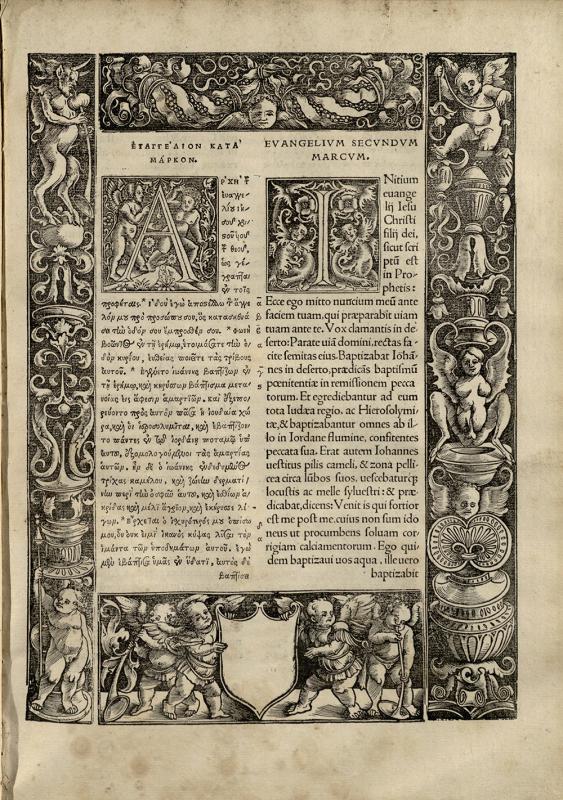
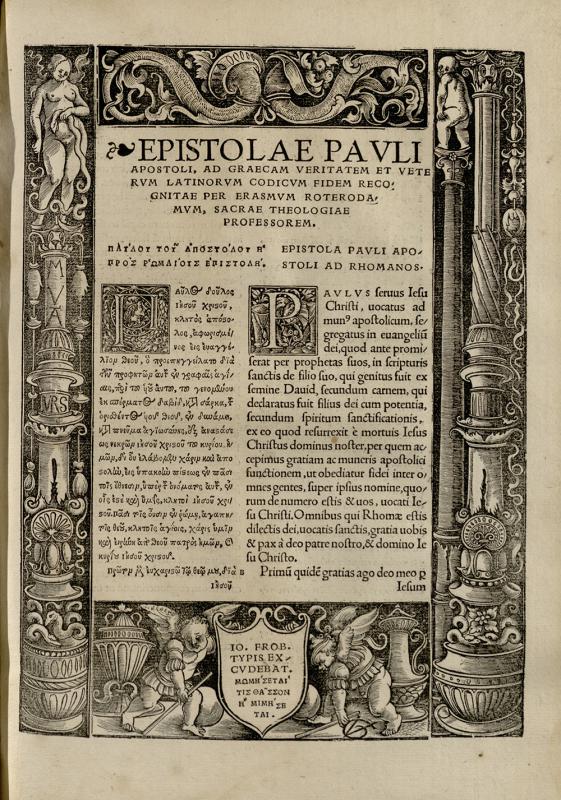
![[Mažųjų Žuchavičių evangelija]. XVI a. Bažnyt. slavų k. [Mažųjų Žuchavičių evangelija]. XVI a. Bažnyt. slavų k.](http://web6.mab.lt/files/large/77102c6636d5471bfc56814b642f6146edef30d5.jpg)
![[Mažųjų Žuchavičių evangelija]. XVI a. Bažnyt. slavų k. [Mažųjų Žuchavičių evangelija]. XVI a. Bažnyt. slavų k.](http://web6.mab.lt/files/large/cee36bfc01c016685a9dfe43164499ac2aeaf10b.jpg)
![[Mažųjų Žuchavičių evangelija]. XVI a. Bažnyt. slavų k. [Mažųjų Žuchavičių evangelija]. XVI a. Bažnyt. slavų k.](http://web6.mab.lt/files/large/a7c996500c1ade1fb897cf0bc14eca3f9689036f.jpg)
![[Mažųjų Žuchavičių evangelija]. XVI a. Bažnyt. slavų k. [Mažųjų Žuchavičių evangelija]. XVI a. Bažnyt. slavų k.](http://web6.mab.lt/files/large/ebe649c86a5cd87a2ada0dec5cbba78d2f5c3412.jpg)
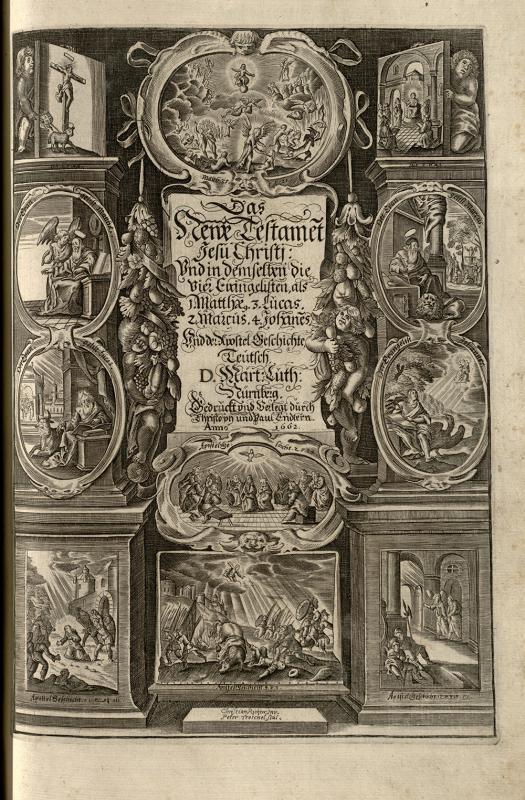
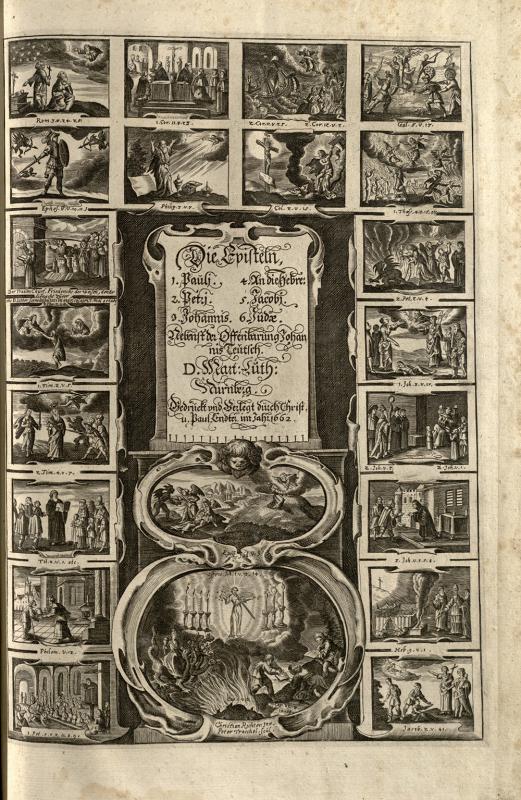
![Bibli czeski. [Praha: G. Melantrych], 1557. Bibli czeski. [Praha: G. Melantrych], 1557.](http://web6.mab.lt/files/large/c6fd563e2e3d46a9c9e14d6a59ee68f0550bea43.jpg)
![Bibli czeski. [Praha: G. Melantrych], 1557. Bibli czeski. [Praha: G. Melantrych], 1557.](http://web6.mab.lt/files/large/83220f7131dd34127a49e388e35e81bbb480cc8f.jpg)